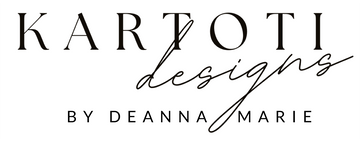If you are in the graphic design business or you are a newbie to the world of graphic design, RGB and CMYK are two terms, referencing color models, you will hear over and over again; especially when submitting your work for printing. So what's the difference you ask? Well here is a basic definition of each.
Both are color models for mixing colors when it comes to graphic design. CMYK is typically used for print work where as RGB is used for digital works. However, there are printers who will request your print files be submitted in the RGB color format. So always, always check your printer's file requirements before submitting your work to be printed.
Now, having outlined what each color model is used for, let's look at each color model independently to get a better understanding of what they're all about. This is where it gets a little techy, but it's important and applies to how each model works.
RGB
The RGB color model is what's called an additive color model. What's an "additive color model" you ask? Well, additive color models use light to display color in which red, green, and blue light are added together in various ways to reproduce a broad array of colors. The name of the model comes from the initials of the three additive primary colors, red, green, and blue. Here is a visual of how the RGB color model works to achieve various colors - notice when all overlapped the center color is white;

Your computer monitor, tablet, smartphone and television set uses the RGB color model.
Breakdown of the RGB Color model:
- Additive color model
- For computer displays
- Uses light to display color
- Colors result from transmitted light
- Red + Green + Blue = White
Did you know?
There are 16,777,216 possible colors in the RGB color model. That's because there are 256 variations of each of the additive colors Red, Green & Blue. Also, each color value is represented numerically 0 through 255 to achieve a specific color. Why only up to 255 you may be wondering? Well zero ("0") is considered a value therefore making up the 256th variation. Below is an example of how the RGB color values work together to get a specific color;

When to use RGB
If your end product is going to be used for the web, TV, smartphones OR if the printer you are using for print work requires your files be in RGB.
RGB File Formats
- JPG
- PSD (Photoshop)
- PNG
- GIF
CMYK
CMYK is typically known as the color model for printed materials. CMYK stands for "Cyan", "Magenta", "Yellow" & "Key". I know the first thing people are wondering about the "K" - which is also known as black, but the "K" stands for "Key Color" or "Key Plate". Unlike its RGB counterpart, CMYK is a subtractive color model.
How does a subtractive color model work, you may be wondering? Well a printing machine creates images by combining CMYK colors to varying degrees with physical ink. This is known as subtractive mixing. All colors start as blank white, and each layer of ink reduces the initial brightness to create the preferred color. When all colors are mixed together, they create pure black. Confusing I know, but it's basically the opposite of the RGB model. Notice in the example below, where the colors intersect is black.

Breakdown of the CMYK color model:
- Subtractive color model
- For printed material
- Also known as process color or four-color process
- Uses ink to display color
- Colors result from reflected light
- Cyan + Magenta + Yellow = Black
The CMYK printing method is also known as "four-color process" or simply "process" color. All of the colors in the printable portion of the color spectrum can be achieved by overlapping "tints" of cyan, magenta, yellow and black inks. A tint is a screen of tiny dots appearing as a percentage of a solid color. When various tints of the four colors are printed in overlapping patterns it gives the illusion of continuous tones - like a photograph:
The CMYK model forms its gamut from the primary subtractive colors of cyan, magenta and yellow. When cyan, magenta and yellow inks are combined it forms black - in theory. However, because of the impurities in ink, when cyan, magenta and yellow inks are combined it produces a muddy brown color. Black ink is added to this system to compensate for these impurities.
Did you know?
In the CMYK color model, colors are represented as percentages of cyan, magenta, yellow and black. White would be 0% cyan, 0% magenta, 0% yellow and 0% black (a total absence of ink on white paper). Below is an example of the same color used in the RGB example but in CMYK:

When to Use CMYK
Use CMYK for any projects that will be physically printed and not used on a screen. As mentioned before, some printers will want files in an RGB format and others CMYK, so always check with your printer on their preferred file format for your printing projects.
CMYK File Formats
- PDF's
- AI (Illustrator)
- EPS
There you have it, the difference between RGB and CMYK color models and an overview of how they work. I hope this helps clear up any confusion you may have had when creating your newest masterpiece. Wishing you a creative day today!
Ciao!
Deanna
Works Cited
Doughty, M. (2009, March 27). Graphics Color Models. Retrieved July 15, 2021, from http://www.sketchpad.net/basics4.html


